Manufacturer: MSI
UK price (as reviewed): MSRP £260 (inc. VAT)
US price (as reviewed): MSRP $300 (exc. tax)

Despite the fact that most of us use a single graphics card and onboard audio, ATX still tops sales charts. This is likely due to two reasons. Firstly, mini-ITX and micro-ATX boards cost about the same - you don't save much cash downsizing, and the same can be said of cases. Secondly, there's always been a bit of a stigma around smaller form factors. Maybe they're seen as less manly, but why have a massive PC when you can have a smaller rig that's just as powerful and takes up less space?
Micro-ATX is arguably the best balance here too, with enough scope to offer two-way GPU support and/or additional PCIe slots to make use of expansion cards - especially important these days and something you can't do with mini-ITX if you're using a discrete GPU. We digress, of course, but another fact is that a fully kitted-out sub-ATX board is a decidedly drool-worthy thing.
With the disappointing absence of Asus in the HEDT micro-ATX arena since it canned its Rampage Gene a while back, we've had to rely on other manufacturers, and thankfully all have come up trumps over the last few years. Here we're looking at MSI's effort at a micro-ATX X299 board, and the X299M Gaming Pro Carbon AC - to give it its full name - seems to be right on the money too.

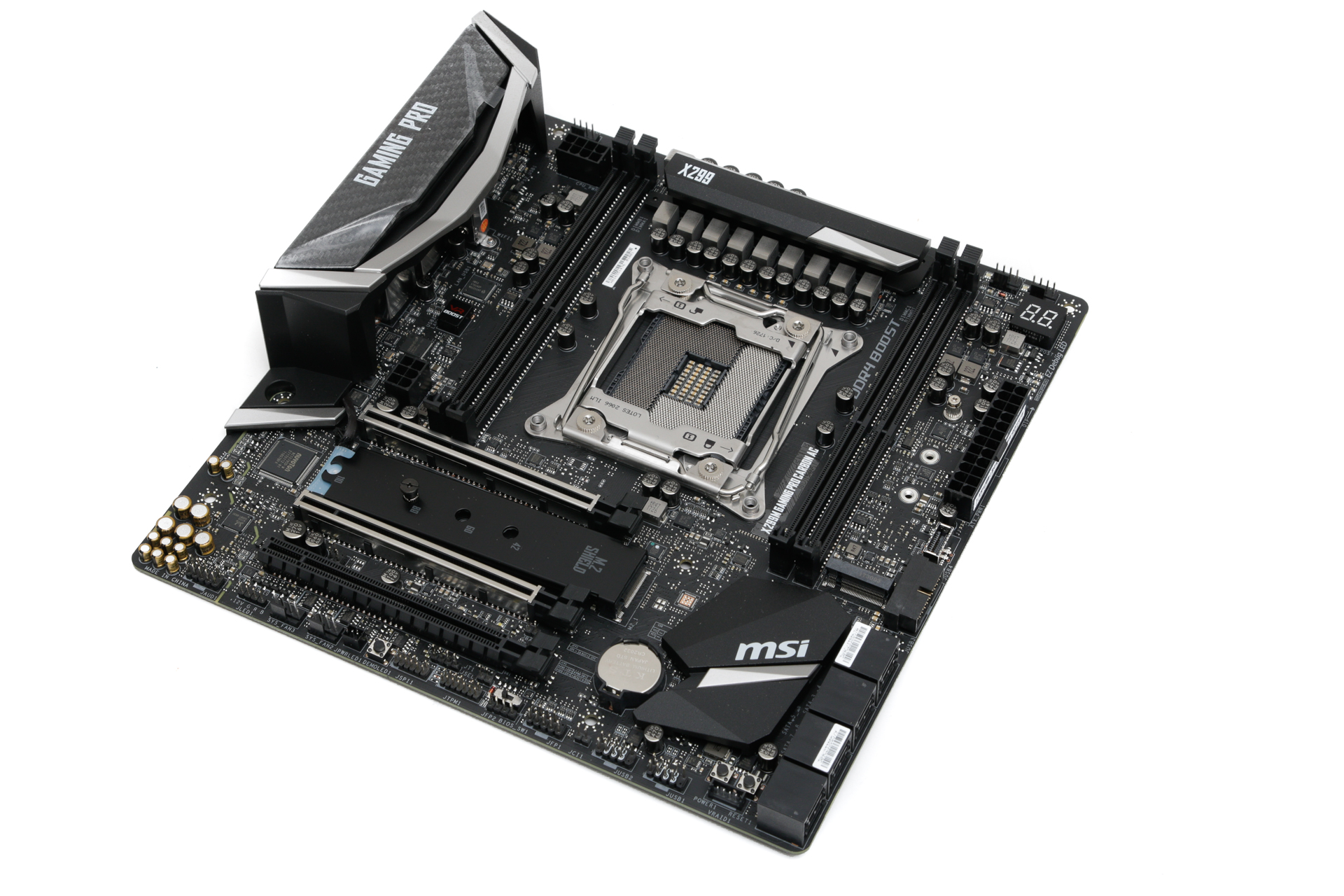
For £260, you get a motherboard that's every bit as lust-worthy as its ATX counterparts all in a 244mm x 244mm package. Despite the smaller PCB real estate, you get the full whack of eight SATA 6Gbps ports, two M.2 ports - both of which support either PCIe or SATA powered M.2 SSDs with one sporting a large heatsink - RGB lighting, onboard Wi-Fi, dual LAN ports, tweaking tools, and a plethora of USB ports too.
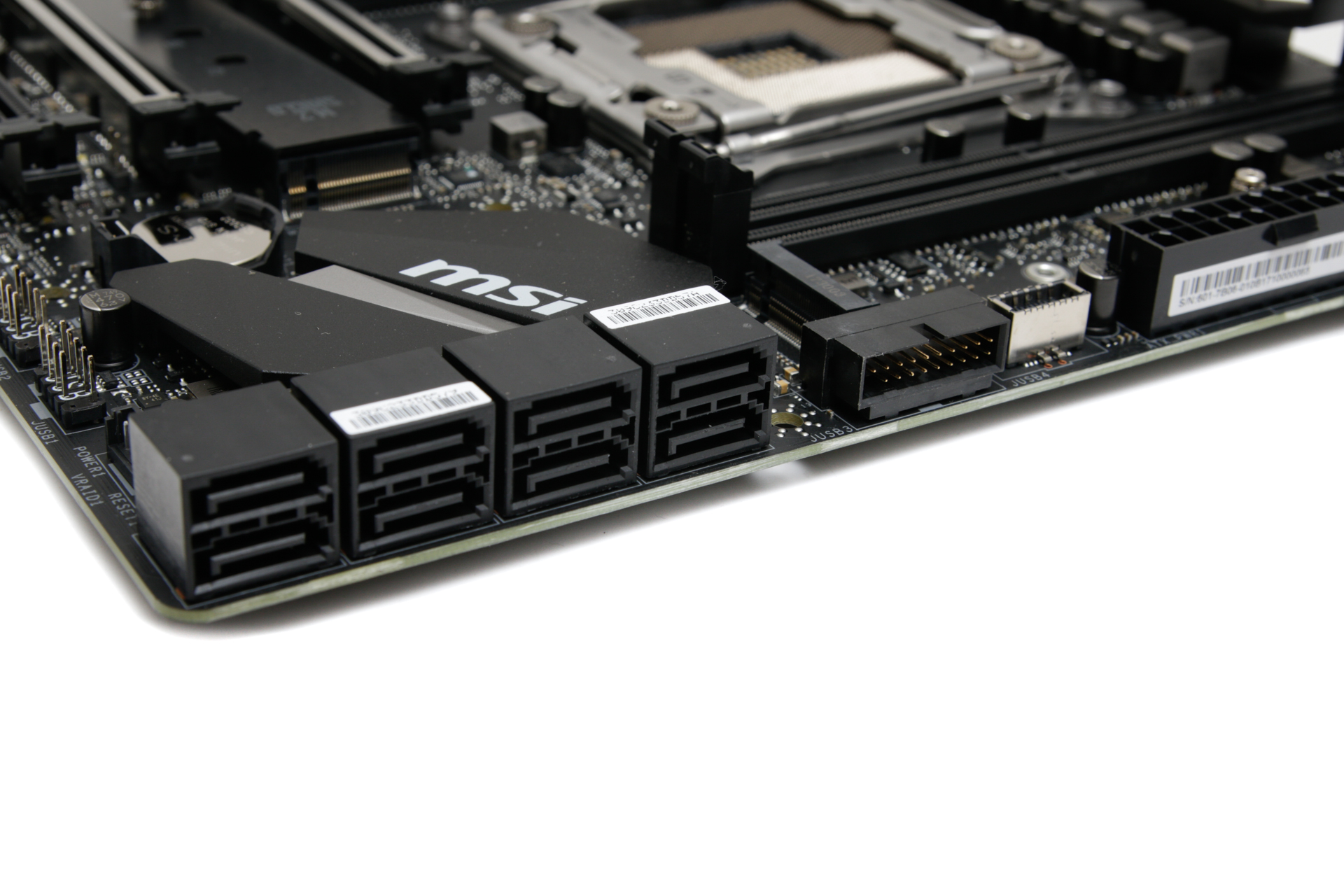

There's a USB 3.1 header on the PCB for powering case's equipped to handle the new standard, but you also get USB 2.0 and USB 3.0 headers too. MSI has shoehorned five fan headers in as well, and there's the full complement of overclocking and testing tools with an LED POST code display at the top.
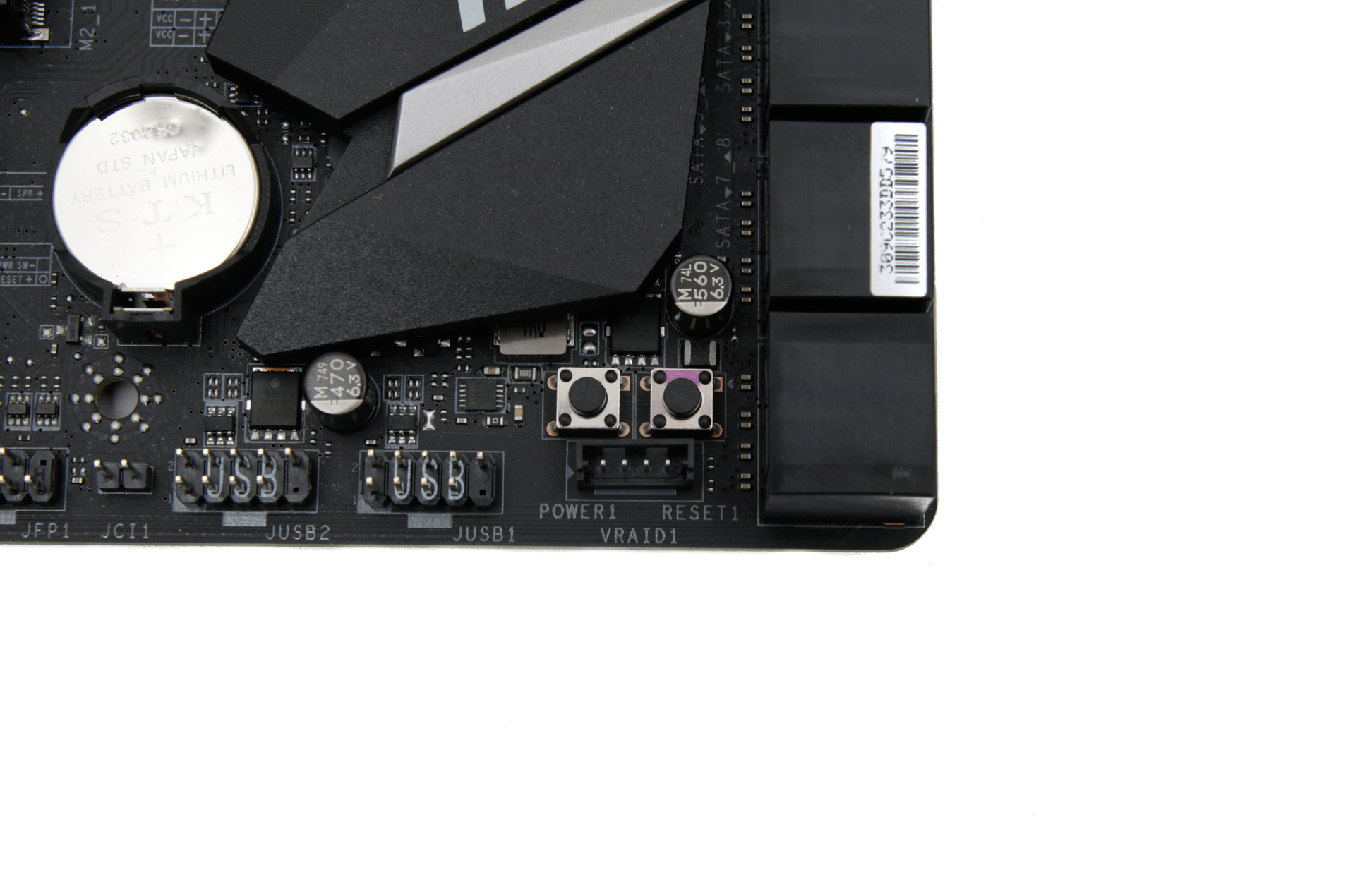

Nestled in behind the SATA ports are power and reset buttons, although these can be tricky to reach if you're using two dual-slot graphics cards. There's also a dual-BIOS switch too for overclockers, while a CMOS clear switch is located on the rear I/O panel.

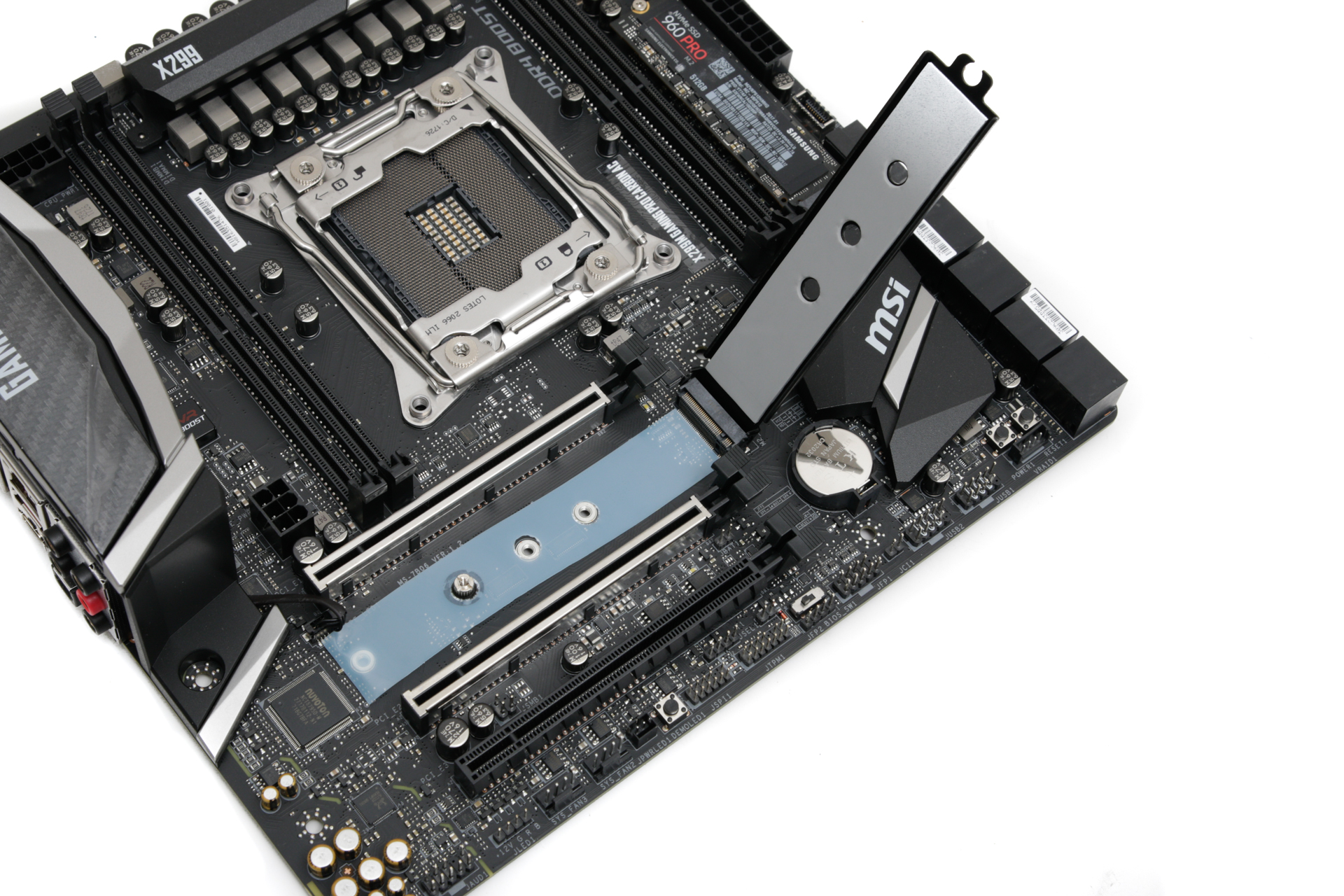
Of the two M.2 ports, one has a heatsink, although as this was situated directly under our graphics card, it only saw a 7°C improvement to the temperature of our Samsung 960 Evo compared to not using it at all: 59°C versus 66°C. Slightly more damning was the fact that the more open and accessible slot next to the 24-pin ATX connector actually offered a temperature 8°C lower still. As a result, we'd suggest using this port first and only opt for the heatsink-equipped port if you have a second SSD. Sadly, this port lacks the notches required to hold down the heatink - maybe something to think about, MSI?
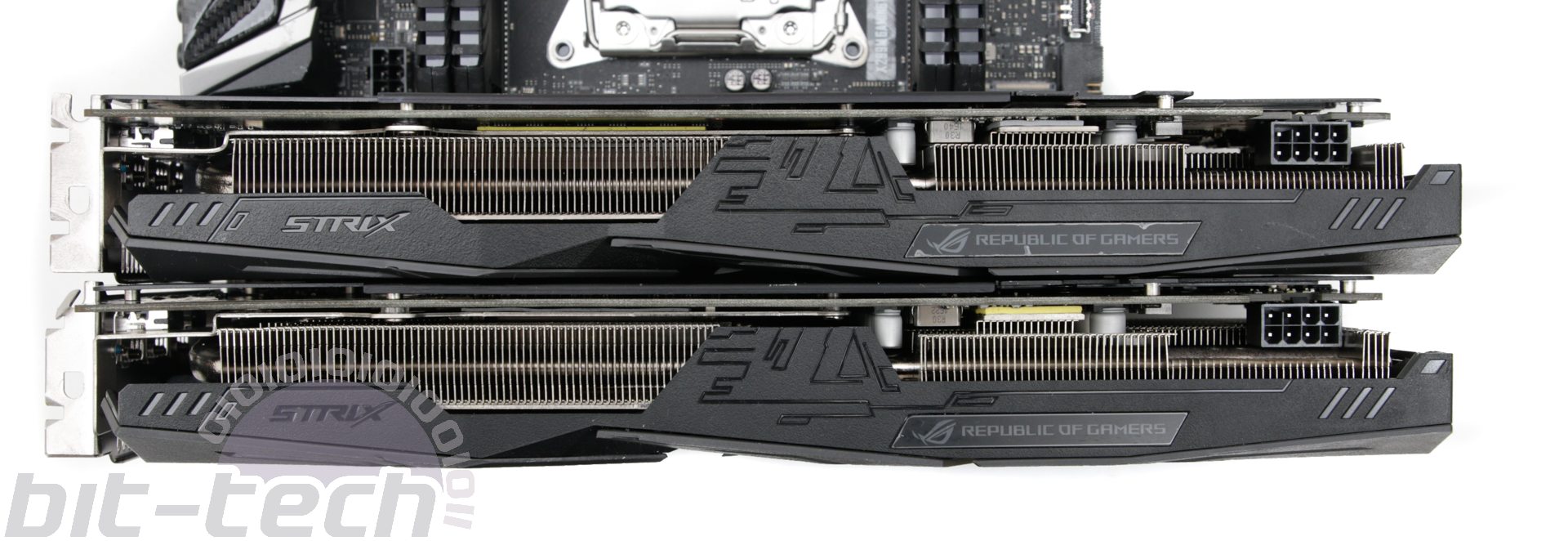
The layout is generally excellent, and thanks to the fact that there are no heatsinks on the left side of the board and only four DIMM slots, there's actually a good deal of space around the CPU socket. The same can't be said for the two primary PCIe slots, though, as using two dual-slot graphics cards sees the upper card's cooler completely blocked by the lower one. This is what you can expect for micro-ATX and two-way GPU setups, though, so unless you want to see lower 3D results like those in our graphs due to throttling, you'll need to invest in water-cooling gear.

In the box you get a couple of magnetic Wi-Fi antennas for the 802.11ac adaptor on the I/O panel, an RGB LED extension cable, a selection of thumb screws for mounting 3D printed objects, and also silver and gold replacement fascias for the I/O shroud. The I/O panel itself sports a total of seven Type-A ports with the usual Type-C and Type-A USB 3.1 ports plus four USB 3.0 ports.
Specifications
- Chipset Intel X299
- Form factor ATX
- CPU support Intel Socket LGA 2066 (Skylake-X, Kaby Lake-X)
- Memory support Quad-channel, four slots, max 128GB
- Sound Eight-channel Realtek ALC1220
- Networking 2 x Intel Gigabit Ethernet, 802.11ac Wi-Fi, Bluetooth 4.2
- Ports 2 x M.2 PCIe 3.0 x4 32Gbps (1 x PCIe/SATA 6Gbps up to 2280, 1 x PCIe/SATA up to 22110), 8 x SATA 6Gbps, 1 x USB 3.1 Type-A, 1 x USB 3.1 Type-C, 1 x USB 3.1 Gen 2 header, 6 x USB 3.0 (2 via headers), 6 x USB 2.0 (4 via header), 2 x LAN, audio out, line in, mic, Optical S/PDIF out
- Dimensions (mm) 244 x 244
- Extras RGB LED extension cable, 3D printed object mounting screws

MSI MPG Velox 100R Chassis Review
October 14 2021 | 15:04

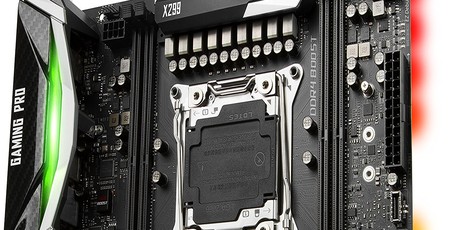
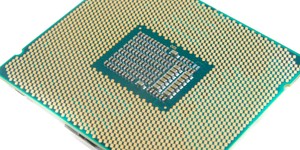
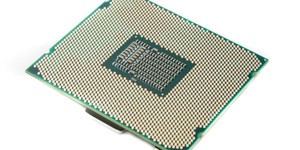
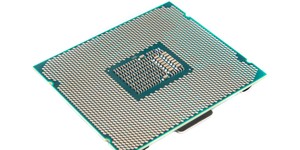




Want to comment? Please log in.